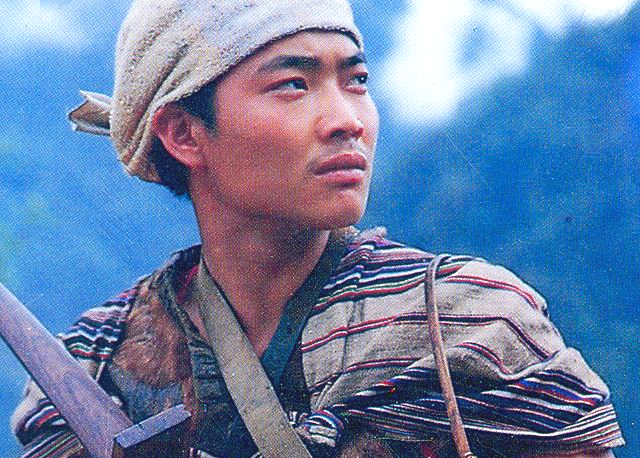© This article is an extract from Paul Hattaway's epic 656-page China’s Book of Martyrs, which profiles more than 1,000 Christian martyrs in China since AD 845, accompanied by over 500 photos. You can order this or many other China books and e-books here.
1941 - Antonio Barosi
November 19, 1941
Dingcunji, Henan
Antonio Barosi.
Born in Italy on November 23, 1901, few could have guessed that Antonio Barosi would end up a bishop of the Catholic Church in China, and would give his life as a martyr for the cause of Christ. When he was 11-years-old, Barosi’s family moved to Cremona, where the young boy served in the cathedral. In 1913, aged just 12, he entered the Diocesan Seminary, with his goal to become a priest and serve the local community. His direction in life was altered after meeting Silvio Pasquali, a missionary to India. Pasquali’s ministry deeply impacted Barosi, and in 1925 he was ordained a priest and appointed a missionary by the Archbishop of Milan. In October of the same year, he arrived in China after a sea journey lasting two months and 18 days.
After many months of studying Chinese, Barosi had not advanced very far, and found the sounds hopelessly incoherent and confusing. Consequently, he was sent to help the Chinese students of a Catholic school, in the hope that regular contact with the students would speed up his ability to understand their language. In the late 1920s and throughout the 1930s Barosi continued to minister in Henan Province. He was deeply concerned with the advance of Communism and frequently mentioned the dangers of this new movement in letters home. In 1929 the Italian found himself in the crossfire of a battle between soldiers and a group of bandits at Dengzhou. The bandits had tried to extort money from Barosi, but when he refused to comply, he and another missionary were tied up and placed on the side of a road. In the confusion and mayhem, they managed to free themselves and escaped past dozens of dead bodies.
Barosi was appointed to oversee a huge Catholic work in Nanyang, southern Henan, that involved schools, medical clinics, seminaries, orphanages, and numerous churches. On January 18, 1931, Barosi wrote to the seminarians in Cremona:
“For three years we have been living with nervous tension so great that, if not for the special grace of the Lord, we would certainly be worn out completely. Many of our brethren have been captured by the brigands and many others have been killed. And, unfortunately, the story is not over yet! We live day by day, trusting in the Lord.”[1]
On one occasion Barosi lamented, “Trouble seems to follow me around, wherever I go.” He told a friend, “As you can imagine, I have to be an engineer, an architect, and a labourer too. Here you become well versed in all fields…. The day begins at 4:00 in the morning and ends at 10:00 at night. And I’m not even mentioning the excursions and trips that have to be done.”[2]
In the spring of 1940 Barosi received a great honour when he was appointed Vicar Apostolic of Kaifeng, replacing Bishop Giuseppe Tacconi, a veteran of 45 years in China. After a dangerous 20-day journey through war-infested territory just to get from the south of Henan Province to the north, Barosi arrived to take up his new appointment.
In November 1941 the new Bishop of Kaifeng, Barosi, asked three priests, Mario Zanardi, Bruno Zanelli, and Gerolamo Lazzaroni, to accompany him to the district of Dingcunji where ministry awaited them. Dingcunji is located about 185 miles (300 km) from Kaifeng. On November 19th the local Catholics came together for a celebratory lunch with the priests. A local official suddenly appeared, accompanied by a platoon of 16 armed soldiers. The situation in China was so chaotic at the time that to this day nobody is sure if the murderers were government troops, or local bandits dressed to appear like soldiers. A curfew was imposed on the town, then,
“Bishop Barosi and Father Zanelli were tied up and their mouths stuffed with paper. Then the atrocities began…. The soldiers departed at evening by boat as a cold rain began to fall. The townspeople at first believed that the priests had been taken hostage. But when they looked around, they noticed a well that had been closed with debris. Using bamboo poles, they retrieved, one by one, the bodies of Barosi, Zanelli, and Zanardi. It was not until the next morning that they also found Lazzaroni’s body in the well. By all indications, he had been buried alive.”[3]
1. Zambon, Crimson Seeds, 68.
2. Zambon, Crimson Seeds, 68-69.
3. Robert Royal, The Catholic Martyrs of the Twentieth Century: A Comprehensive History (New York: Crossroad Publishing, 2000), 324-325.





